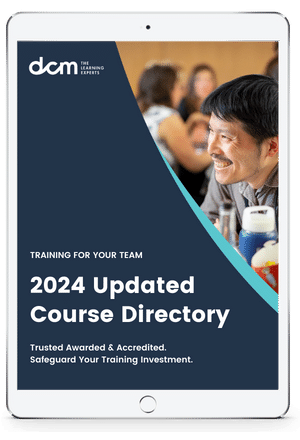You’ve heard all about the importance of using Facebook to grow your business. You know that it has a large user base. You realize that it can help you find new customers. But actually doing marketing on Facebook is a whole other story.
Wouldn't it be nice to have a little pocket guide to navigating Facebook? To help you break through all the clutter on Facebook and actually start seeing results, we put together the infographic and tips below. Check them out.

How to Use Facebook for Business
1. Do: Use a Recognizable Profile Picture
Being recognizable on Facebook is important to get found and Liked. Because your profile picture is at the top of your Page and used as your thumbnail for all of your posts, you need to make sure it's something that your Fans will actually associate with your brand. Usually, it's best to just go with your company logo.
2. Don't: Leave Your Company’s “About” Section Blank
A preview of your “about” section is shown beneath your profile picture, and it's one of the first places people will look when they're scanning your Page. Make sure yours displays relevant information about your company - what you sell, your website, what times you're open, etc. - to help answer people's questions right off the bat.
3. Do: Coordinate Your Cover Photo, Pinned Post, and Profile CTA to Promote Marketing Campaigns
These three things are the most immediately visible parts of your Page. If you want to maximize engagement with your marketing campaigns, try matching your copy and creative across all three.
So if you're promoting an ebook, for example, you could create a cover photo featuring an image of your ebook, publish an organic post to your page that contains a link to your landing page, and make sure the profile CTA has a link to the landing page as well.
4. Don't: Use a Dummy Account
There's no way around this one. Dummy accounts violate Facebook's terms and conditions - so just don't create them.
If you'd like to avoid post publishing mishaps, set up different publishing settings for different employees on your Page. Check out this help document from Facebook if you'd like to see what roles you can set for different members of your team.
5. Do: Tailor Your Organic Posts
Targeting on Facebook isn't just for paid content - you can also use them for organic posts too. Instead of blasting out all of your posts to all of your Fans, think about ways you can use Facebook targeting tools to segment your organic posts by age, gender, education, etc. By being more specific with your targeting, you might be able to generate even better engagement.
6. Don't: Post Too Often
Companies with fewer than 10,000 Facebook followers receive 60% fewer interactions per post when they post 60+ times per month. So don't overwhelm your customers by posting more than a few times per day. Instead, spend more time crafting higher-quality Facebook posts, and, you know, getting to the other thousands of things on your to-do list.
7. Do: Use Tracking URLs and Facebook Insights to Analyze Your Page Performance
You can't improve your Facebook Page if you don't know how your posts are performing in the first place. Use tracking URLs with UTM codes to identify which posts are driving traffic and conversions to your website. And for Page-specific data such as your engagement rate per post, head over to Facebook Insights.
Once you have insights from these analyses, you can tailor your content strategy to post more of what works - and less of what doesn't.
8. Don't: Forget About Multimedia Posts
You've heard it before, and you'll hear it again: visual content is essential to succeeding on social media.
And don't just take my word for it. Research has shown the use of visual content in Facebook campaigns can generate 65% more engagement after only one month.
9. Do: Post During Strategic Times of Day
While the best time of day can vary from Page to Page and audience to audience, there has been some data released that shows that posts published between 1 - 4 p.m. have the best clickthrough and share rates. Use this as a jumping-off point to discover which time of day works best for you.
10. Don't: Be Slow to Respond
Did you know that 42% of consumers who complain on social media expect a 60-minute response time? Whether your audience posts negative or positive comments, ignoring them only creates possible anger or disappointment. So take a few minutes out of your day to monitor your Facebook Page and respond to any issues that crop up.
11. Do: Try Using Paid Budget to Amplify Successful Organic Posts
Get better ROI for your ads by promoting content that you already know works. Putting budget behind organic content that's performing well can expand your reach and attract more people to your Page.
12. Don't: Make Assumptions
The last thing you want is for your posts to blend in with the rest of the clutter on a customer’s News Feed. Just because a strategy works well for one industry doesn't mean it will work well for yours. Test your assumptions -- even the ones we've outlined in this post -- to see what actually works for you.
Source: Hubspot
_165x115_fc3.jpg) What is Facebook Advertising (Facebook Ads)?
Facebook Ads • Social Media for Business • Social Media Marketing
What is Facebook Advertising (Facebook Ads)?
Facebook Ads • Social Media for Business • Social Media Marketing
 Basics of Facebook Marketing for Businesses
Facebook Ads • Social Media for Business • Social Media Marketing
Basics of Facebook Marketing for Businesses
Facebook Ads • Social Media for Business • Social Media Marketing
 Why Social Media is Important for Business Marketing
Social Media for Business • Social Media Marketing
Why Social Media is Important for Business Marketing
Social Media for Business • Social Media Marketing





